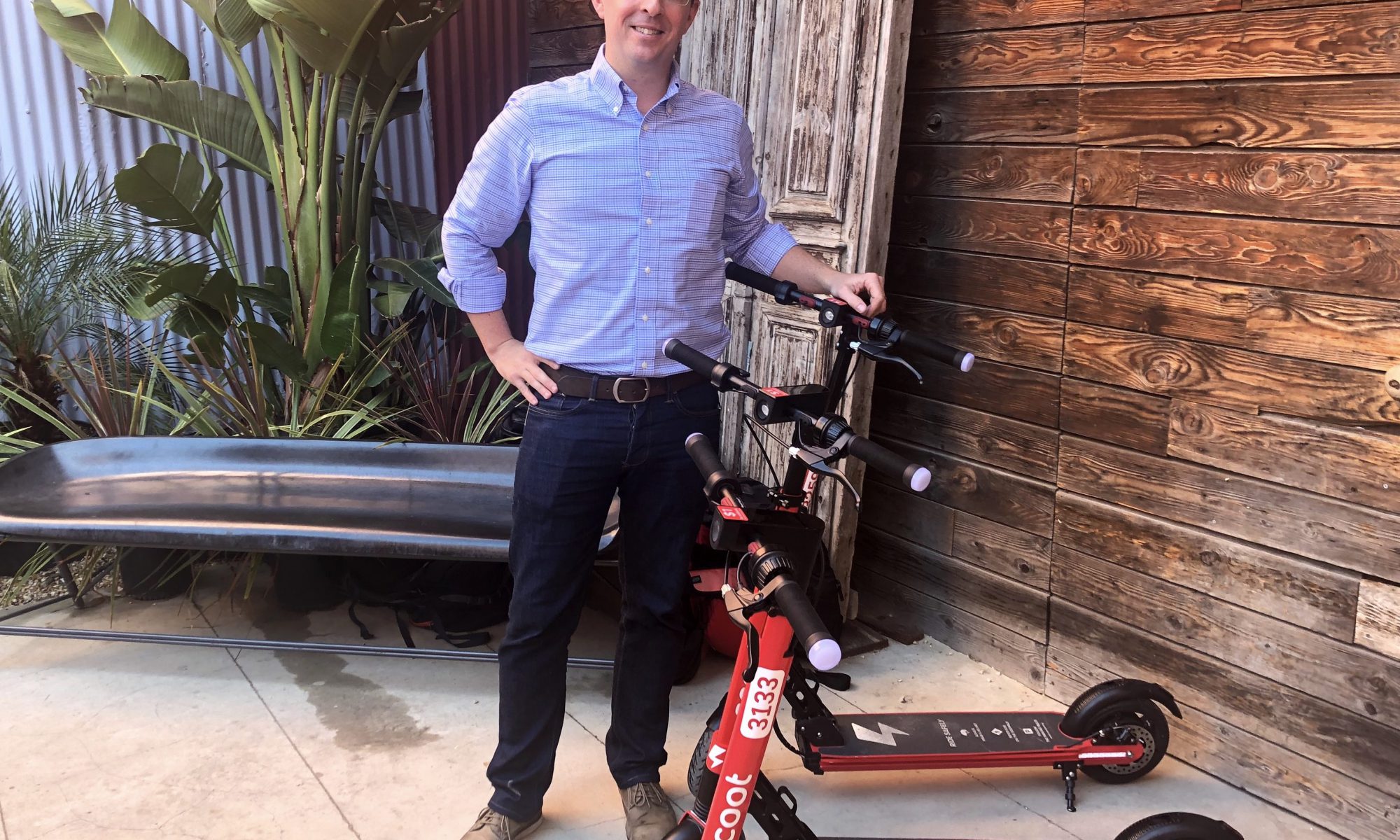TechCrunch: Hey Portal, dial Mark
Portal: Do you mean Mark Zuckerberg?
TC: Yes
Portal: Dialling Mark…
TC: Hi Mark! Nice choice of grey t-shirt.
MZ: Uh, new phone who dis? — oh, hi, er, TechCrunch…
TC: Thanks for agreeing to this entirely fictional interview, Mark!
MZ: Sure — anytime. But you don’t mind if I tape over the camera do you? You see I’m a bit concerned about my privacy here at, like, home
TC: We feel you, go ahead.
As you can see, we already took the precaution of wearing this large rubber face mask of, well, of yourself Mark. And covering the contents of our bedroom with these paint-splattered decorator sheets.
MZ: Yeah, I saw that. It’s a bit creepy tbh
TC: Go on and get all taped up. We’ll wait.
[sound of Mark calling Priscilla to bring the tape dispenser]
[Portal’s camera jumps out to assimilate Priscilla Chan into the domestic scene, showing a generous vista of the Zuckerbergs’ living room, complete with kids playing in the corner. Priscilla, clad in an oversized dressing gown and with her hair wrapped in a big fluffy towel, can be seen gesticulating at the camera. She is also coughing]
Priscilla to Mark: I already told you — there’s a camera cover built into into Portal. You don’t need to use tape now
MZ: Oh, right, right!
Okay, going dark! Wow, that feels better already
[sound of knuckles cracking]
TC: So, Mark, let’s talk hardware! What’s your favorite Amazon Echo?
MZ: Uh, well…
TC: We’d guess one with all the bells & whistles, right? There’s definitely something more than a little Echo Show-y about Portal
MZ: Sure, I mean. We think Alexa is a great product
TC: Mhmm. Do you remember when digital photo frames first came out? They were this shiny new thing about, like, a decade ago? One of those gadgets your parents buy you around Thanksgiving, which ends up stuck in a drawer forever?
MZ: Yeah! I think someone gave me one once with a photo of me playing beer pong on it. We had it hanging in the downstairs rest room for the longest time. But then we got an Android tablet with a Wi-Fi connection for in there, so…
TC: Now here we are a decade or so later with Portal advancing the vision of what digital photo frames can be!
MZ: Yeah! I mean, you don’t even have to pick the pictures! It’s pretty awesome. This one here — oh, right you can’t see me but let me describe it for you — this one here is of a Halloween party I went to one year. Someone was dressed as SpongeBob. I think they might have been called Bob, actually… And this is, like, some other Facebook friends doing some other fun stuff. Pretty amazing.
You can also look at album art
TC: But not YouTube, right? But let’s talk about video calling
MZ: It’s an amazing technology
TC: It sure is. Skype, FaceTime… live filters, effects, animoji…
MZ: We’re building on a truly great technology foundation. Portal autozooming means you don’t even have to think about watching the person you’re talking to! You can just be doing stuff in your room and the camera will always be adjusting to capture everything you’re doing! Pretty amazing.
TC: Doing what Mark? Actually, let’s not go there
MZ: Portal will even suggest people for you to call! We think this will be a huge help for our mission to promote Being Well — uh, I mean Time Well Spent because our expert machine learning algorithms will be nudging you to talk to people you should really be talking to
TC: Like my therapist?
MZ: Uh, well, it depends. But our AI can suggest personalized meaningful interactions by suggesting Messenger contacts to call up
TC: It’s not going to suggest I videchat my ex is it?
MZ: Haha! Hopefully not. But maybe your mom? Or your grandma?
TC: Sounds incredibly useful. Well, assuming they didn’t already #deletefacebook.
But let’s talk about kids
MZ: Kids! Yeah we love them. Portal is going to be amazing for kids
TC: You have this storybook thing going on, right? Absent grandparents using Portal to read kids bedtime stories and what not…
MZ: Right! We think kids are going to love it. And grandparents! We’ve got these animal masks if you get bored of looking at your actual family members. It’s good, clean, innovative fun for all the family!
TC: Yeah, although, I mean, nothing beats reading from an actual kid’s book, right?
MZ: Well…
TC: If you do want to involve a device in your kid’s bedtime there are quite a lot of digital ebook apps for that already. Apple has a whole iBooks library of the things with read-aloud narration, for example.
And, maybe you missed this — but quite a few years ago there was a big bunch of indie apps and services all having a good go at selling the same sort of idea of ‘interactive remote reading experiences’ for families with kids. Though not many appear to have gone the distance. Which does sort of suggest there isn’t a huge unmet need for extra stuff beyond, well, actual children’s books and videochat apps like Skype and FaceTime.
Also, I mean, children’s story reading apps and interactive kids’ e-books are pretty much as old as the hills in Internet terms at this point. So, er, you’re not really moving fast and breaking things are you!?
MZ: Actually we’re more focused on stable infrastructure these days
TC: And hardware too, apparently. Which is a pretty radical departure for Facebook. All those years everyone thought you were going to do a Facebook phone but you left it to Amazon to flop into that pit… Who needs hardware when you can put apps and tracker pixels on everything, right?!
But here you are now, kinda working with Amazon for Portal — while also competing with Alexa hardware by selling your own countertop device… Aren’t you at all nervous about screwing this up? Hardware IS hard. And homes have curtains for a reason…
MZ: We’re definitely confident kids aren’t going to try swivelling around on the Portal Plus like it’s a climbing frame, if that’s what you mean. Well, hopefully not anyway
TC: But about you, Facebook Inc, putting an all-seeing-eye-cum-Internet-connected-listening-post into people’s living rooms and kids’ bedrooms…
MZ: What about it?
[MZ speaking to someone else in the room] Does the speaker have an off switch? How do I mute this thing?
TC: Hello? Mark?
[silence]
[sound comes back on briefly and a snatch of conversation can be heard between Mark and Priscilla about the need to buy more diapers. Mark is then heard shouting across the room that his Shake Shack order of a triple cheeseburger and fries plus butterscotch malt is late again]
[silence] 
[crackle and a congested throat clearing sound. A child is heard in the background asking for Legos]
MZ: Not now okay honey. Okay hon-, uh, hello — what were you saying?
TC: Will you be putting a Portal in Max’s room?
MZ: Haha! She’d probably prefer Legos
TC: August?
MZ: She’s only just turned one
TC: Okay, let’s try a more direct question. Do you at all think that you, Facebook Inc,
 might have a problem selling a $200+ piece of Internet-connected hardware when your company is known for creeping on people to sell ads?
might have a problem selling a $200+ piece of Internet-connected hardware when your company is known for creeping on people to sell ads?
MZ: Oh no, no! — we’ve, like, totally thought of that!
Let me read you what marketing came up with. Hang on, it’s around here somewhere…
[sound of paper rustling]
Here we go [reading]:
Facebook doesn’t listen to, view, or keep the contents of your Portal video calls. Your Portal conversations stay between you and the people you’re calling. In addition, video calls on Portal are encrypted, so your calls are always secure.
For added security, Smart Camera and Smart Sound use AI technology that runs locally on Portal, not on Facebook servers. Portal’s camera doesn’t use facial recognition and doesn’t identify who you are.
Like other voice-enabled devices, Portal only sends voice commands to Facebook servers after you say, ‘Hey Portal.’ You can delete your Portal’s voice history in your Facebook Activity Log at any time.
Pretty cool, huh!
TC: Just to return to your stable infrastructure point for a second, Mark — did you mean Facebook is focused on security too? Because, well, your company keeps leaking personal data like a sieve holds water…
MZ: We think of infrastructure as a more holistic concept. And, uh, as a word that sounds reassuring
TC: Okay, so of course you can’t 100% guarantee Portal against hacking risks, though you’re taking precautions by encrypting calls. But Portal might also ‘accidentally’ record stuff adults and kids say in the home — i.e. if its ‘Hey Portal’ local listening function gets triggered when it shouldn’t. And it will then be 100% up to a responsible adult to find their way through Facebook’s labyrinthine settings and delete those wiretaps, won’t it?
MZ: You can control all your information, yes
TC: The marketing bumpf also doesn’t spell out what Facebook does with ‘Hey Portal’ voice recordings, or the personal insights your company is able to glean from them, but Facebook is in the business of profiling people for ad targeting purposes so we must assume that any and all voice commands and interactions, with the sole exception of the contents of videocalls, will go into feeding that beast.
So the metadata of who you talk to via Portal, what you listen to and look at (minus any Alexa-related interactions that you’ve agreed to hand off to Amazon for its own product targeting purposes), and potentially much more besides is all there for Facebook’s taking — given the kinds of things that an always-on listening device located in a domestic setting could be accidentally privy to.
Then, as more services get added to Portal, more personal behavioral data will be generated and can be processed by Facebook for selling ads.
MZ: Well, I mean, like I told that Senator we do sell ads
TC: And smart home hardware too now, apparently.
One more thing, Mark: In Europe, Facebook didn’t used to have face recognition technology switched on did it?
MZ: We had it on pause for a while
TC: But you switched it back on earlier this year right?
MZ: Facebook users in Europe can choose to use it, yes
TC: And who’s in charge of framing that choice?
MZ: Uh, well we are obviously
TC: We’d like you to tap on the Portal screen now, Mark. Tap on the face you can see to make the camera zoom right in on this mask of your own visage. Can you do that for us?
MZ: Uh, sure
[sound of a finger thudding against glass]
MZ: Are you seeing this? It really is pretty creepy!
Or — I mean — it would be if it wasn’t so, like, familiar…

Facebook CEO Mark Zuckerberg arrives to testify before a joint hearing of the US Senate Commerce, Science and Transportation Committee and Senate Judiciary Committee on Capitol Hill, April 10, 2018 in Washington, DC. (Photo: JIM WATSON/AFP/Getty Images)
[sound of a child crying]
Priscilla to Mark: Eeeew! Turn that thing off!
TC: Thanks Mark. We’ll leave you guys to it.
Enjoy your Shake Shack. Again.
Portal: Thanks for calling Mark, TechCrunch! Did you enjoy your Time Well Spent?

Source: Tech Crunch




















